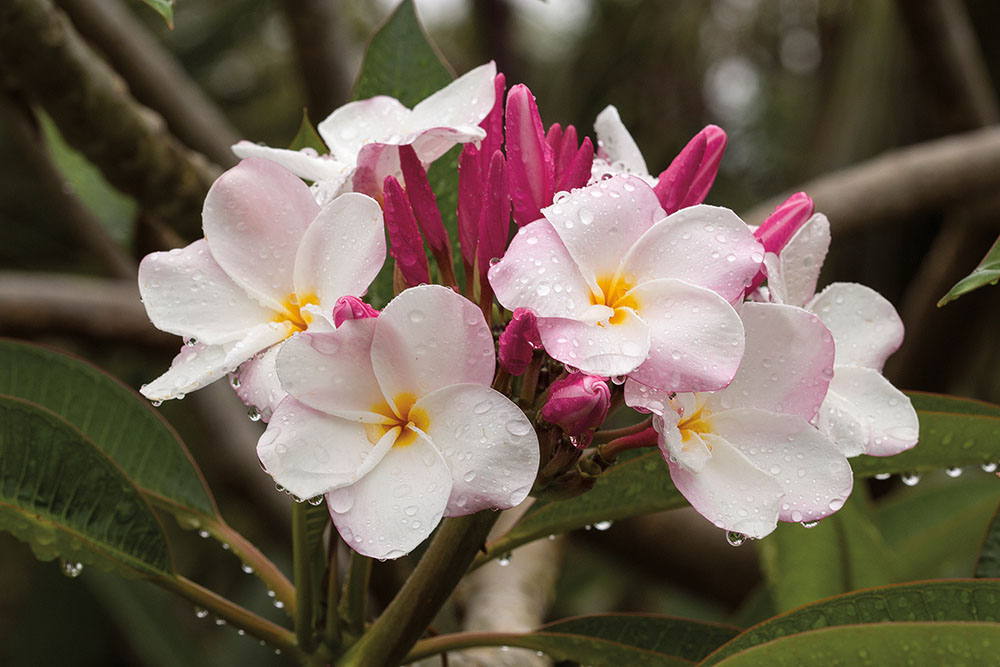Evening Fragrances Plants
Plants That Release Their Scent for the Night Owl
When the sun goes down and the moon rises, it’s not only the bats, raccoons, and opossums that come out. By some strange deal with mother nature, a slew of local flowers either bloom or release their fragrances at night. And what better way to enjoy the rewards of your garden toil after the sun sets?
Most of the following plants don’t bloom just at night, but their flowers smell more intensely after dark. One, however, opens only after dark and can be called vespertine – a new word for your vocabulary – meaning active after dark. For the rest of them, just close your eyes and enjoy.

The Tahitian Gardenia (Gardenia taitensis) is a relatively small, bushy plant that isn’t actually native to Tahiti, but from further west, in Melanesia. It flowers in daylight, but fragrance increases at night, and the large white pinwheel flowers attract night-flying moths with their nectar. Gardenias don’t love our high pH alkaline soil, so if you notice foliage turning yellow, try a fertilizer for plants that like acidic soil, as per label directions.

Frangipanni (Plumeria) are iconic of Hawaii, though the plant is native to Central and South America. Plumeria flowers are open during the day but are most fragrant at night – to lure sphinx moths to pollinate them. The poor moths are fooled, as Plumeria flowers provide no nectar. Nevertheless, the moths spread its pollen. Varieties include flowers of white, yellow, pink, red, and combinations of these. Plumeria prefers seasonally drier conditions, so don’t over-irrigate, especially before or while they are blooming.

Angels’ Trumpets (Brugmansia) are intensely fragrant at night. These aren’t strictly night-blooming, but often wilt come daytime heat. Brugmansia can be found in various shades of pink, yellow, peach, apricot, cream, and yellow, with flowers forming large, pendant trumpets.

Lady of the Night are a member of the Brunfelsia species from tropical America. Two in particular—Brunfelsia americana and B.nitida—are both called Lady of the Night for good reason: their scent wafts with the pulses of evening warmth. The more familiar yesterday-today-tomorrow plant, Brunfelsia grandiflora, is in the same genus, and while providing evening scent is also more alkaline-soil tolerant.

Night-blooming Jasmine (Cestrum nocturnum) is not an actual jasmine. But its narrow, trumpet-shaped flowers tipped with star-like petals are known to perfume the night. Cestrum is also known as potentially invasive, but with such a gorgeous scent, we don’t mind that too much.

Dragonfruit (Hylocereus undatus), aka pitaya, is a plant that blooms strictly at night. The flowers resemble fried eggs, with white petals and yellow center. They may not smell sweet, but are glorious and worth staying up late to see; by morning, they will be gone. This sprawling, climbing cactus needs a firm hand to stop it from taking over.
There are lots more plants that seem to come alive after dark. We have had to omit many, but we encourage you to research the topic when planning your garden, particularly in areas you may frequent in the magic hours after the sun goes down.


